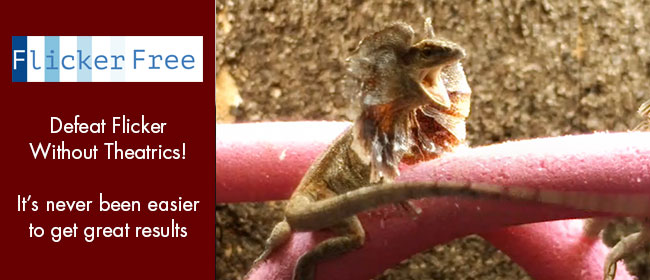
Lighting for Success
About a year ago I started working again with video in a serious way. With cameras and a fluid video head purchased, the next thing up was lighting. In my particular case, I had shot a mix of strobe and fluorescent continual lighting for my still photography work. The daylight temperature fluorescents work very well for video, but my strobes had little to no use. It was time to add more continual lighting and resign myself to selling my strobes.
I’ve found that Fluorescent continual lighting makes great fill light; nice and soft, and even reasonable hair or rim light. But I want something stronger and more specular. I like a harder light for my key. My ideal is a three light kit, or three point setup as it is commonly called. It makes a great package for interviews as well as a starting lighting package for even my more elaborate lighting setups. I like owning my basic lights to work out lighting options in advance of a job, but I rent additional supplemental lighting as needed for specific jobs.
Purchasing well made, well designed professional gear is one of the best investments I’ve always made. It makes production work so much easier when you use tools designed for photographic use, as there are specific standards that are well established. Electrical requirements, approved safety techniques, and even specifications for approved mounting techniques are all an easy Google search away. For myself, the three greatest strengths that keep me buying “pro” grade gear are quality, reliability, and ease of use. Quality of the light output and quality in the craftsmanship used in manufacturing the unit are both important to me. If the light isn’t pretty, the case it comes in doesn’t matter. A well made professional light should last me for years, where a cheaply constructed unit will likely need replacing every year in my busy environment.
A basic three point lighting kit is a tool I will use on almost every shoot, so I’ve been carefully evaluating my needs and options. I have decided to go with LED lights, as the weight, portability, ease of setup, low operating temperature, and availability of battery power are all requirements for my type of work. I can not always count on available line power on location, so the battery option is mandatory for me. I’ve tried rented generators, but they just make so much noise even setup 100′ from the set that I find recording clean sound almost impossible. Using wall power also means having to carry heavy extension cords that when deployed do provide power, but come with the additional liability of someone tripping over one of my cords and knocking a light over. Field work using battery makes so much more sense.
I had a good first look at the latest in LED lighting this week thanks to Ken Smith, the Pro Lighting Specialist at Samy’s Camera, 431 South Fairfax Ave, Los Angeles, Calafornia. Ken has been in the Pro lighting business here in Hollywood long enough to write a tome on the subject, and probably should.
Ken introduced me to a new brand of LED lighting from San Francisco area based Fiilex that has just been released for general sale. I look forward to investigating these new lights further, and will report back with more information and our test results. My brief inspection of these lights in the store lead me to believe they may be exactly what I have been looking for.
The finish is excellent, and the design is superb. Most importantly, the light from this “350 watt incandescent equivalent” LED jewel is pretty, with the dim-able output adjustable in color temperature across the spectrum you would normally need or want. This means you can fine tune the color to match available location lighting almost exactly in temperature; or you can use it as a creative tool as does Patrick McGinley in the movie above, shooting portraits of the Shelf Life mini series while testing the Fiilex P360 LED light and the P200 Flexjet FIber optic illuminator.
[ratings]








